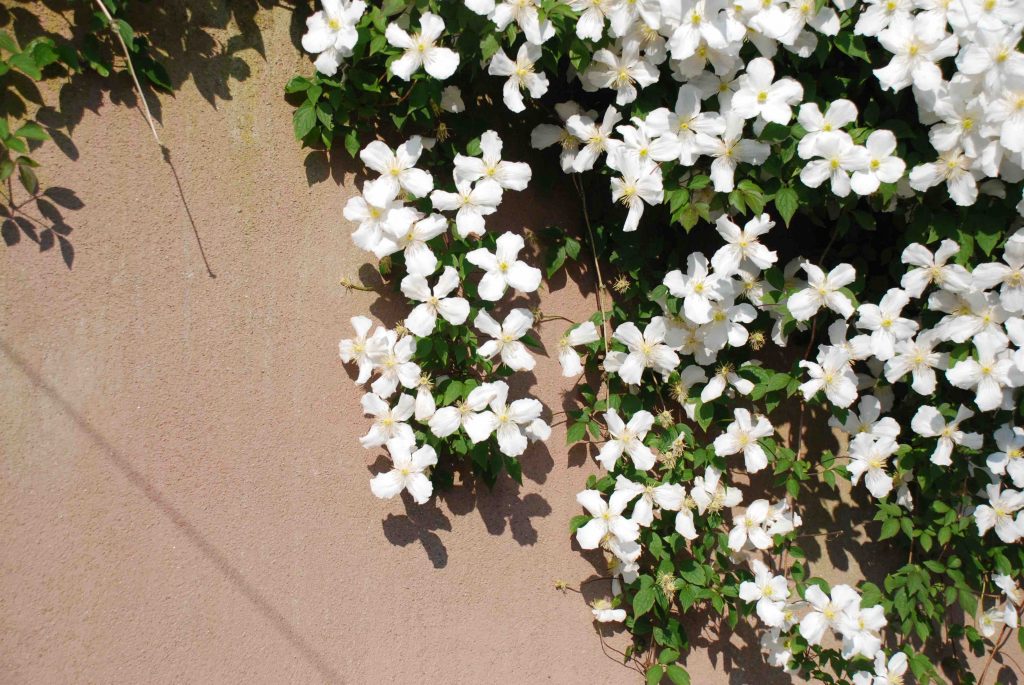
Clematis are the most popular of woody climbers. They are varied in size, shape and colour and adaptable too. There is a clematis for almost every part of the garden though they are especially popular for clothing trellis against house walls and for patio pots. Curiously, these are not the best places for the majority of clematis and, due to that, questions about clematis dominate my inbox of garden problems, especially at this time of year. The large-flowered clematis, blooming in May and June, are often described as liking their heads in the sun and their feet in the shade. If they are short of water when in growth the lower leaves turn brown and the remaining leaves get mildew, covering them with white powder at first but later turning the remaining leaves brown. Mildew is encouraged by dryness at the roots. Mulching the roots or the traditional ‘putting a paving slab over the roots’ can help but neither compensate for the mistake of planting a clematis at the foot of a sunny house wall in a narrow bed that rarely gets rain.
Growing in pots is useful but, despite what you may see in photos, it is rare to be able to get flowers from compost level to the top of an obelisk. Fortunately, the range of hybrid clematis is expanding every year and the latest ‘Raymond Evison’ patio clematis are the answer to many prayers. His ‘Boulevard’ ® range, including rich red ‘Nubia’, white ‘Kitty’ and purple ‘Edda’ flower all summer and are easy to prune – simply cut them down hard in spring. They resolve lots of issues about pruning and training and are truly fine garden plants.
This is a far cry from my early days at Knights when the choice of clematis was very limited. The most popular was Clematis montana, that May-flowering beauty that is better suited to swamping a shed that growing up a trellis. It is still widely offered and grown and has the advantage that it does not suffer from most clematis ills and is spectacular when covered in bloom. But it is a giant and better for planting in the ground than in pots. If you need to prune always do this immediately the flowers drop. Do it in autumn, winter or spring and you remove all the potential flowers.
Jobs for the week
Potting mint and herbs
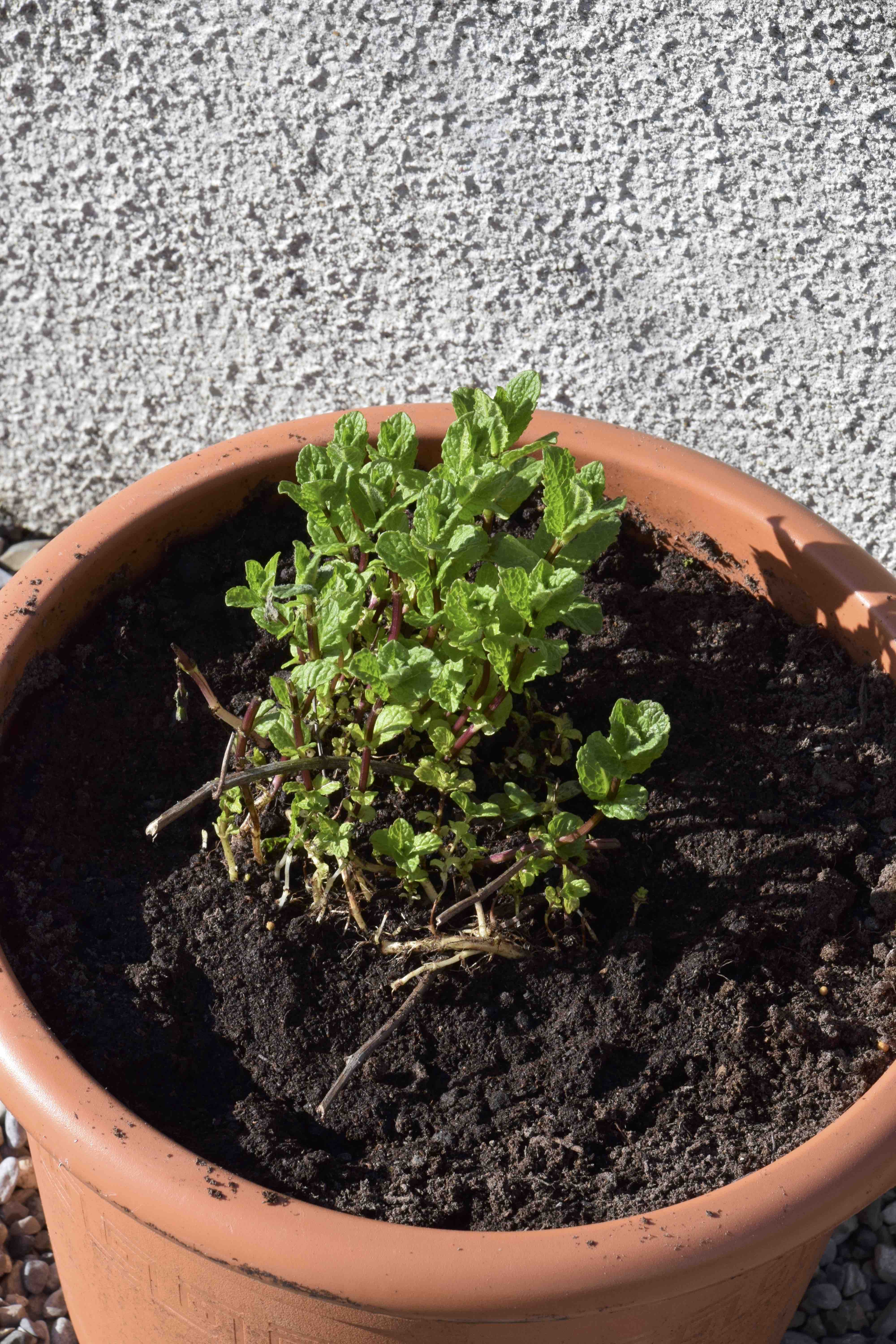
This is a good time to plant up a pot of herbs. I divide them into two groups and keep them separate in pots. First, the woody, sun-loving herbs that are small bushes such as sage, rosemary, lavender and thyme and perhaps oregano and marjoram. These should be planted together in a pot, in John Innes compost. Then there are the softer, green herbs, many of which are annuals or biennials such as parsley, coriander, chervil and chives. These tolerate a little shade and will be leafier and less inclined to run to seed if grown in moist, rich soil and are fine in multipurpose compost. And then we come to mint! Mint needs to be confined to a pot or it will take over the garden. But it needs moist, rich soil and must be repotted every year or two of it loses vigour. I chop off a piece, discard the rest, and pot it in a mix of John Innes and multipurpose every spring. My favourite mint is Moroccan mint – great for everything and perfect for mint tea.
Violas
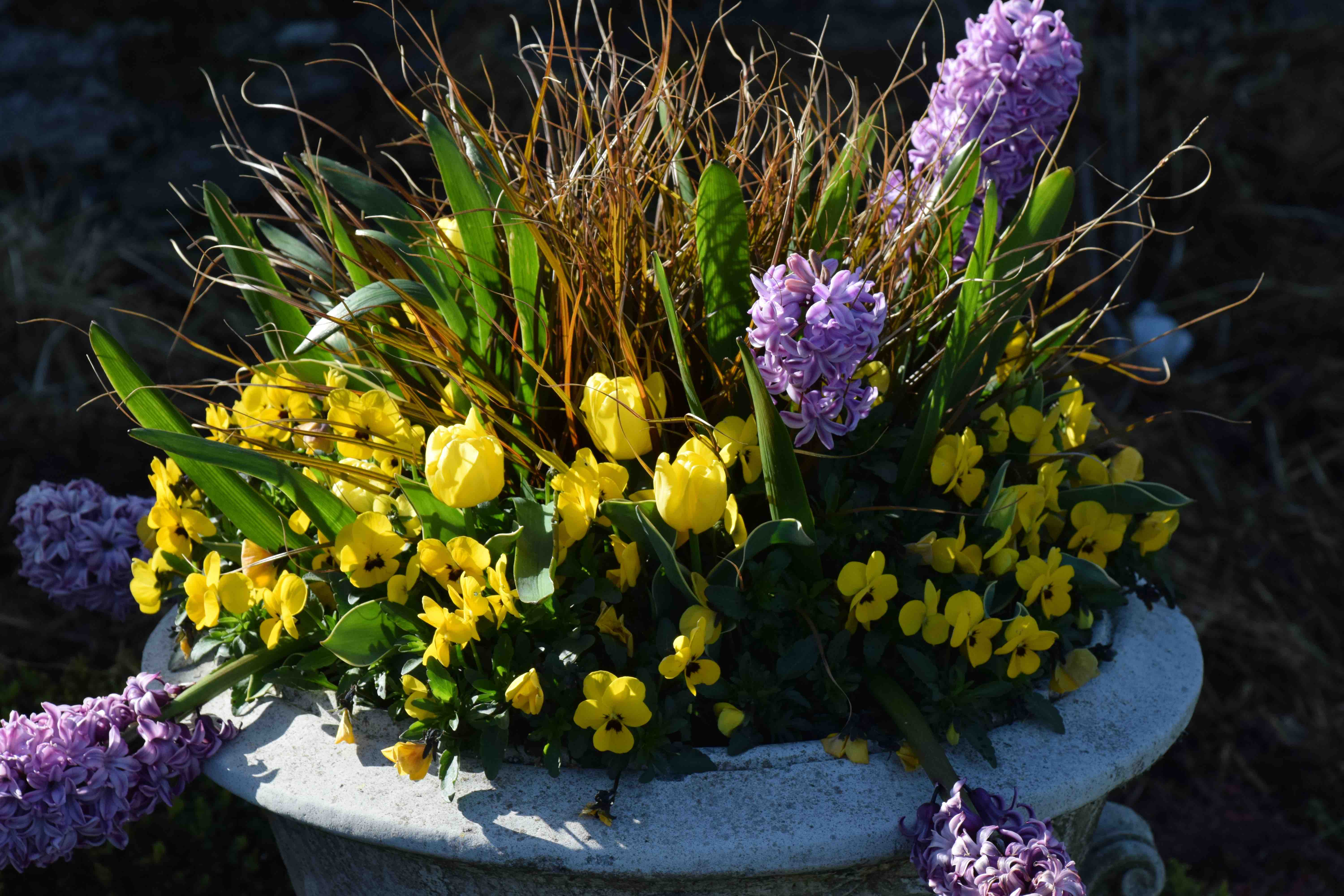
Because it is difficult to buy new plants, we need to keep our winter and spring pots looking good. Violas and pansies may produce a few flowers in winter but they really look their best about now, when we are usually thinking about turfing them out and planting petunias. This year we can appreciate their bright and fragrant flowers a bit longer but they need our help. Pinch off faded flowers, along with the seed pods, to keep them blooming, keep them moist and feed once a week. Take off the dead flowers of hyacinths, tulips and daffodils but leave the foliage to develop and die down naturally.
Sowing veg
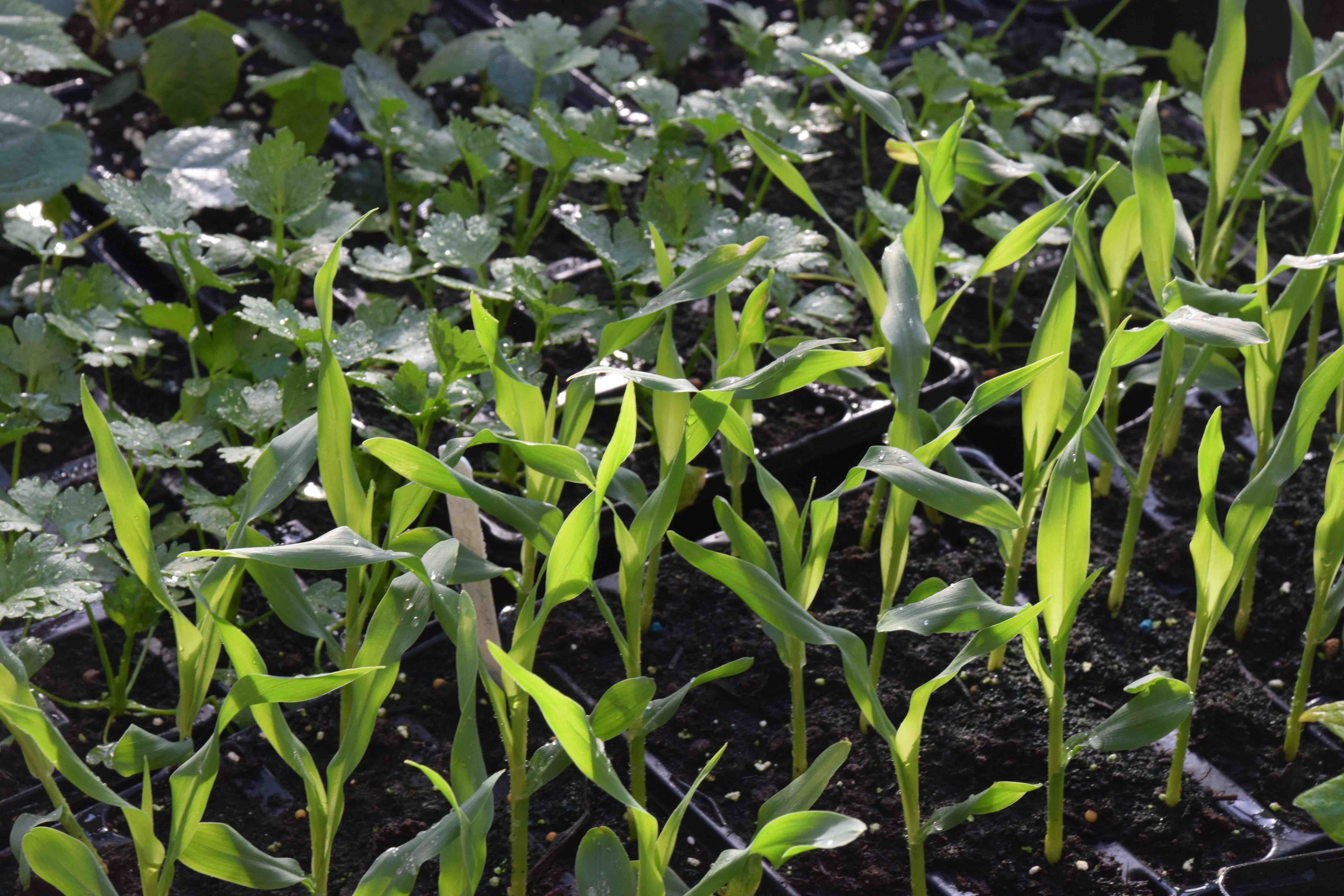
Sow courgettes, squash and sweetcorn in cell trays now. Although it is later than you might like these later sowings quickly catch up with early sowings. If you can buy seedlings avoid sweetcorn that is sown in a clump in a pot – the seedlings resent being pulled apart and disturbed. Sow one or two seeds per cell and pinch off the weaker if two grow. Courgettes are worth growing in a large pot or raised beds but sweet corn is not worth the effort unless you can grow a decent-sized block of at least 25 plants because the cobs are pollinated by wind and pollination is only effective if plants are surrounded by other sweetcorn plants.
Tidy patios
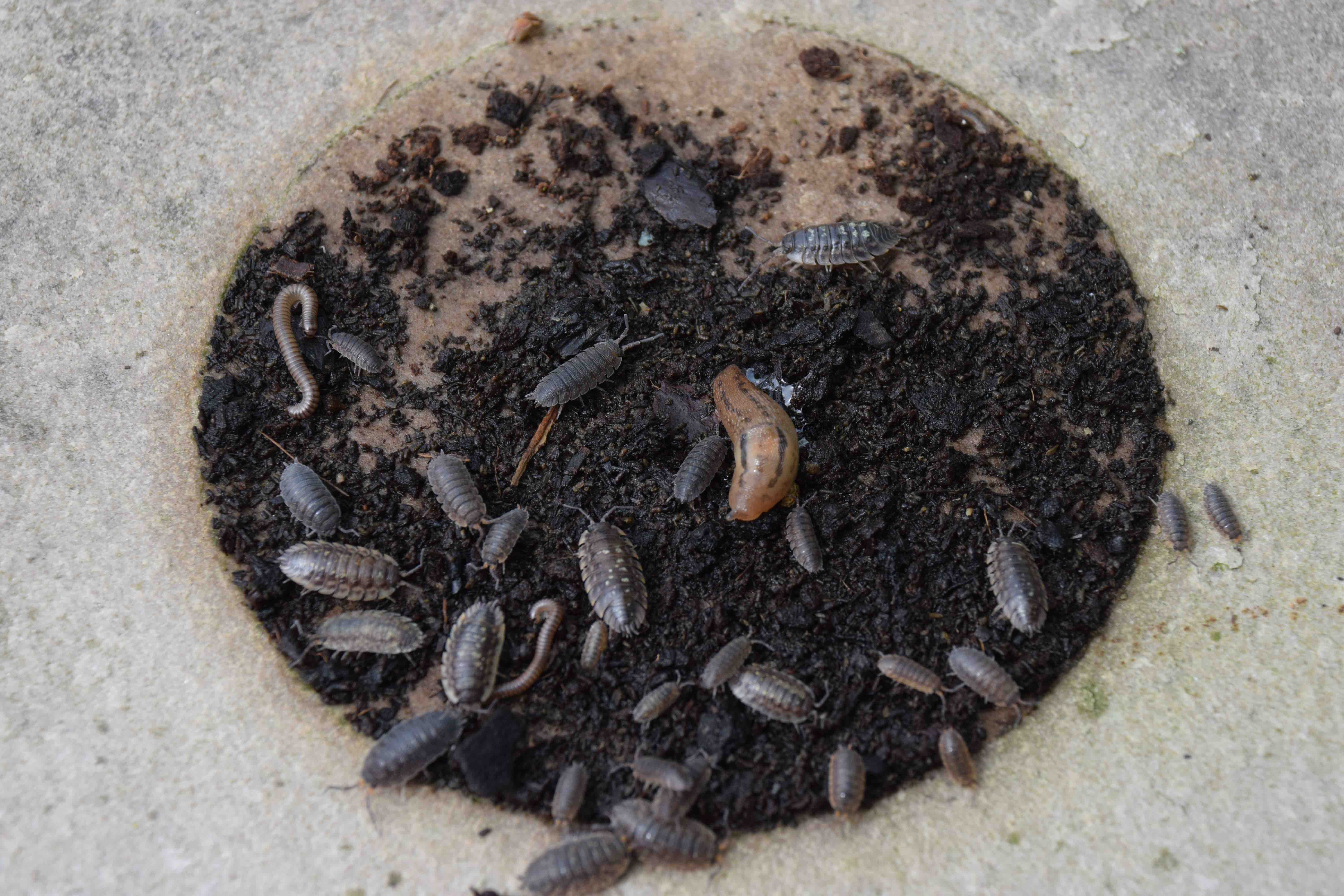
Having a bit more time on our hands means we can do a bit of housekeeping on the patio. Sweep up fallen leaves and debris that makes comfy homes for pests. Lift up a pot and you may find a community of pests like these woodlice, millipedes and slugs.